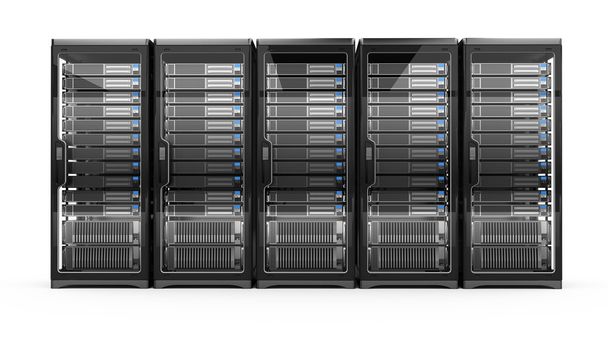In today’s digital age, where data has become the lifeblood of businesses and organizations, the importance of robust and reliable server infrastructure cannot be overstated. At the heart of this infrastructure lies the server cabinet, an essential component that provides a secure and organized environment for housing critical servers, networking equipment, and other hardware.

This article delves into the world of server cabinets, exploring their significance, key features, and the role they play in supporting modern IT operations.
Section 1: The Foundation of Server Infrastructure: A server cabinet serves as the foundation for an efficient and effective server infrastructure. It is a purpose-built enclosure designed to house servers, switches, routers, and other networking equipment. These cabinets are available in various sizes, ranging from small wall-mounted enclosures to large rack-mounted systems that can accommodate numerous servers.
Section 2: Optimal Protection and Security: One of the primary functions of a server cabinet is to provide a secure environment for sensitive hardware. Cabinets are constructed with sturdy materials such as steel or aluminum to protect the equipment from physical damage, theft, and unauthorized access. Many cabinets feature lockable doors, tamper-proof designs, and additional security measures to ensure data integrity and confidentiality.
Section 3: Efficient Organization and Cable Management: Server cabinets offer effective organization and cable management solutions, which are vital for maintaining an efficient IT infrastructure. Cabinets are designed with mounting rails or shelves that enable the easy installation and removal of servers and equipment. Cable management options, such as cable trays, vertical cable organizers, and cable management rings, help keep cables neatly organized, reducing the risk of accidental disconnections and simplifying maintenance and troubleshooting tasks.
Section 4: Cooling and Airflow Considerations: Proper cooling and airflow management are crucial for maintaining the optimal operating temperature of servers and networking equipment. Server cabinets are equipped with ventilation systems, fans, and perforated doors to promote airflow and dissipate heat generated by the hardware. Some advanced cabinets may also have built-in temperature sensors and intelligent cooling mechanisms that adjust fan speed and airflow based on real-time monitoring, ensuring optimal performance and extending the lifespan of the equipment.
Section 5: Scalability and Future-Proofing: Server cabinets are designed to accommodate growth and evolving technology needs. They provide scalability options, allowing organizations to add or remove servers and equipment as required without disrupting the overall infrastructure. Additionally, cabinets often feature standardized rack-mounting systems, making it easier to integrate new devices and upgrade existing ones. By investing in a well-designed server cabinet, businesses can future-proof their infrastructure and adapt to changing demands.

The server cabinet is an indispensable component of modern IT infrastructure. Its role in providing a secure, organized, and well-cooled environment for critical hardware cannot be overstated. From small businesses to large enterprises, organizations rely on server cabinets to protect their data, optimize performance, and facilitate seamless scalability. As technology continues to advance, server cabinets will evolve to meet new challenges and demands, ensuring the smooth functioning of the digital ecosystem that powers our interconnected world.
Learn more at Wiki as well.